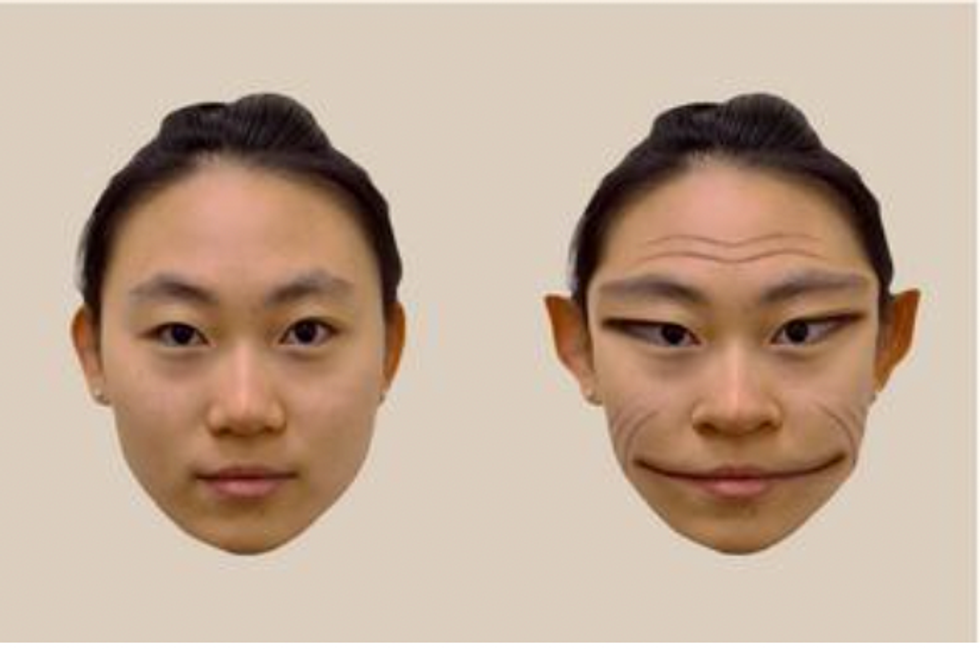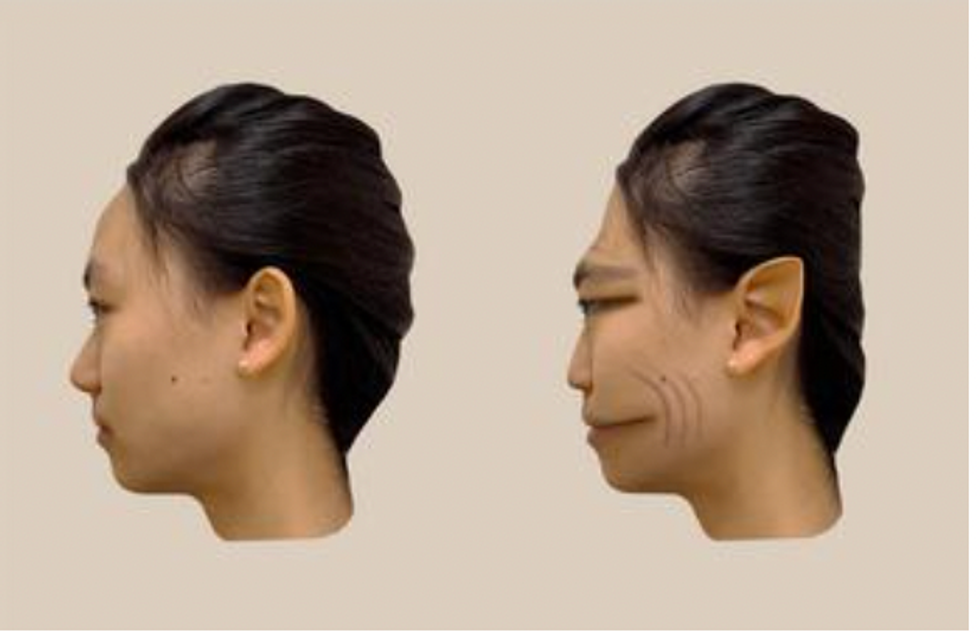Prosopometamorphopsia (PMO) causes facial features to appear demonic
A. Mello et al
- Prosopometamorphopsia (PMO) causes facial features to appear distorted
- Researchers have created a photorealistic visualisation of what patients see
Don't Miss
Most Read
Trending on GB News
Do some people's faces appear sinister to you lately? You could have an extraordinarily rare condition, researchers warn.
Prosopometamorphopsia (PMO) is a visual disorder which causes facial features to appear distorted.
Specific symptoms vary from case to case and can affect the shape, size, colour, and position of facial features.
The duration of PMO also varies: it can last for days, weeks, or even years.

The duration of PMO also varies: for some people it can last years
A. Mello et al
Fewer than 100 cases have been reported since 1904.
In a bid to raise awareness about the extremely rare health condition, researchers created a photorealistic image of how a patient with PMO perceives other people's faces.
The research is the first to provide accurate and photorealistic visualisations of the facial distortions experienced by an individual with PMO.
The study, published in The Lancet, reports on a unique case of a patient with PMO.
The patient, a 58-year-old male, sees faces without any distortions when they are viewed on a screen and on paper, but he sees distorted faces that appear "demonic" when viewed in-person.
Most PMO cases, however, see distortions in all contexts, so his case is especially rare and presented a unique opportunity to accurately depict his distortions.
For the study, the researchers took a photograph of a person's face. Then, they showed the patient the photograph on a computer screen while he looked at the real face of the same person.
LATEST DEVELOPMENTS
Why a growing number of middle-aged Britons are dying
Experts warn incoming wave of deadly viruses could be coming
'I was diagnosed with B12 four years ago - my feet still play up'

Most PMO cases, however, see distortions in all contexts - not just 'demonic' faces
A. Mello et al
The researchers obtained real-time feedback from the patient on how the face on the screen and the real face in front of him differed, as they modified the photograph using computer software to match the distortions perceived by the patient.
"In other studies of the condition, patients with PMO are unable to assess how accurately a visualization of their distortions represents what they see because the visualization itself also depicts a face, so the patients will perceive distortions on it too," says lead author Antônio Mello, a PhD student in the Department of Psychological and Brain Sciences at Dartmouth. In contrast, this patient doesn’t see distortions on a screen. This means that the researchers were able to modify the face in the photograph, and the patient could accurately compare how similar his perception of the real face was to the manipulated photograph. "Through the process, we were able to visualize the patient's real-time perception of the face distortions," said Mello.
In their research with other PMO cases, the co-authors state that some of their PMO participants have seen health professionals who wanted to help but diagnosed them with another health condition, not PMO.
"We've heard from multiple people with PMO that they have been diagnosed by psychiatrists as having schizophrenia and put on anti-psychotics, when their condition is a problem with the visual system," said senior author Brad Duchaine, a professor of psychological and brain sciences and principal investigator of the Social Perception Lab at Dartmouth.
"And it's not uncommon for people who have PMO to not tell others about their problem with face perception because they fear others will think the distortions are a sign of a psychiatric disorder," said Duchaine. "It's a problem that people often don't understand."








